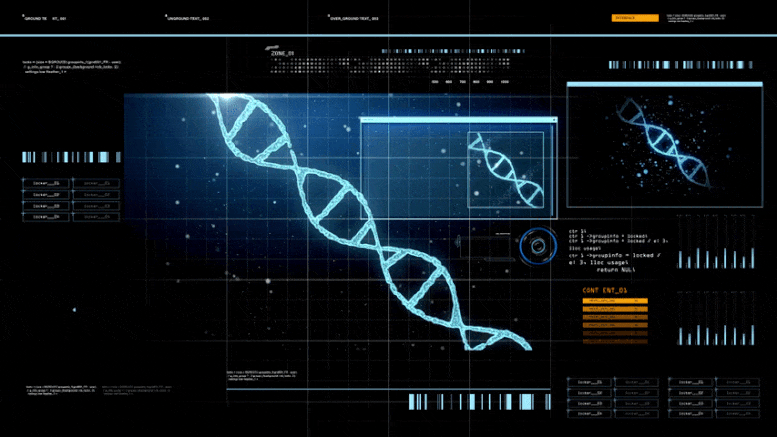Gene editing for the development of new therapies and for the study of diseases and normal function in humans and other organisms can go faster with a new tool for cutting larger pieces DNA According to a new study by scientists at UC San Francisco from the genome of a cell.
Publication of the UCSF study on October 19, 2020 in the journal Natural methods Less than two weeks after two researchers who first used the genetic scissors known as CRISPR-Cas9 were selected to receive this year’s Nobel Prize in Chemistry.
Although CRISPR is now used as a research tool in laboratories around the world, it evolved eons ago in bacteria to fight their ancient nemes, a whole range of viruses known as bacteriophages. When bacteria encounter a phage, they build part of the viral DNA into their own DNA and then serve as a template for production RNA this binds to the corresponding viral DNA in the phage itself. The CRISPR enzymes then target, deactivate and kill the phage.
In his most recent work exploring this ancient and strange arms race, lead researcher Joseph Bondy-Denomy, Associate Professor in the UCSF Department of Microbiology and Immunology, worked with scientists Bálint Csörgő, PhD, and Lina León to develop and test a new CRISPR tool .
The already known CRISPR-Cas9 ensemble is like a molecular chisel with which a small piece of DNA can be cut out quickly and precisely at a specific point. Other methods can then be used to insert new DNA. However, the new CRISPR-Cas3 system, adapted by UCSF scientists, uses a different bacterial immune system. The key enzyme in this system, Cas3, acts more like a molecular wood chopper to quickly and accurately remove much longer sections of DNA.
“Cas3 is like Cas9 with a motor – after it finds its specific DNA target, it runs on DNA and chews it like a Pac-Man,” said Bondy-Denomy.
This new ability to delete or replace long stretches of DNA will allow researchers to more efficiently assess the importance of regions of the genome that contain DNA sequences of indefinite function, according to Bondy-Denomy, an important consideration for understanding humans and the pathogens that plague him.
“Until now, there has been no easy and reliable way to delete very large regions of DNA in bacteria for research or therapeutic purposes,” he said. “Instead of doing 100 different small DNA deletions, we can now just do one deletion and ask, ‘What has changed?'”
Because bacteria and other cell types are commonly used to make pharmaceuticals based on small molecules or proteins, CRISPR-Cas3 allows biotechnology industry scientists to more easily remove potentially pathogenic or useless DNA from these cells, according to Bondy-Denomy.
“Large amounts of bacterial DNA are little known, with unknown functions that in some cases are not necessary for survival,” said Bondy-Denomy. “In addition, bacterial DNA contains large stretches of DNA imported from other sources that can cause disease in the bacterium’s human host or redirect bacterial metabolism.”
CRISPR-Cas3 should also enable entire genes to be inserted into the genome in industrial, agricultural, or even gene therapy applications in humans, Bondy-Denomy said.
UCSF researchers chose and modified the CRISPR-Cas3 system used by the bacterium Pseudomonas aeruginosa and showed that their more compact version worked well in this and three other species, including bacteria that cause disease in humans and plants selected DNA to remove all four types. Other CRISPR-Cas3 systems work in human and other mammalian cells, and this should be achievable for the modified P. aeruginosa system as well, Bondy-Denomy said.
Bondy-Denomy is studying a number of bacterial, bacteriophage, and CRISPR systems to learn more about how they work and to find useful molecular tools. “CRISPR-Cas3 is by far the most common CRISPR system in nature,” he said. “About ten times as many types of bacteria use a Cas3 system as a Cas9 system. Cas3 may be a better bacterial immune system because it shreds phage DNA. ”
Unlike Cas9, when Cas3 binds to its exact DNA target, it begins to chew up a strand of double-stranded DNA in both directions, leaving a single strand exposed. The deletions obtained in the UCSF experiments varied in size and in many cases comprised up to 100 bacterial genes. The CRISPR-Cas3 mechanism should also make it easier to replace deleted DNA with a new DNA sequence, the researchers found.
For the deletion and manipulation of DNA in the laboratory, scientists program CRISPR systems to target specific DNA in the genome of an organism of interest using any guide sequence.
In the new CRISPR-Cas3 study, by manipulating the DNA sequences given to the bacteria to repair the deletions, the researchers were able to pinpoint the limits of these major DNA repairs, which they could not do with CRISPR-Cas9.
Bondy-Denomy previously discovered anti-CRISPR strategies that phages developed to fight against bacteria. These could prove useful in stopping the gene editing reactions triggered by Cas enzymes used as human therapeutics before side effects occur, or to use phages to remove unwanted bacteria that has populated the gut, he said. Aside from E. coli and a few other species, relatively little is known about the 1,000 or so species of bacteria that normally live there.
“Non-model microbes have largely lagged behind in genetics and there is a great need for new tools to study them,” he said.
Reference: “A compact Cascade Cas3 system for targeted genome technology” by Bálint Csörgő, Lina M. León, Ilea J. Chau-Ly, Alejandro Vasquez-Rifo, Joel D. Berry, Caroline Mahendra, Emily D. Crawford, Jennifer D. Lewis and Joseph Bondy-Denomy, October 19, 2020 Natural methods.
DOI: 10.1038 / s41592-020-00980-w
Authors: Bondy-Denomy is a senior writer. Postdoctoral fellow Csörgő and PhD student León co-led this work with other UCSF authors such as Joel Berry, Caroline Mahendra, and Emily Crawford.
Funding: Work was funded primarily by the UCSF Breakthrough Biomedical Research Program, the Innovative Genomics Institute, and the National Institutes of Health Director’s Early Independence Award to Bondy-Denomy.
Information: Bondy-Denomy is a member of the Scientific Advisory Board of SNIPR Biome and Excision Biotherapeutics and a member of the Scientific Advisory Board and co-founder of Acrigen Biosciences. UCSF has filed a patent application covering various aspects of editing the Cas3-based genome.



